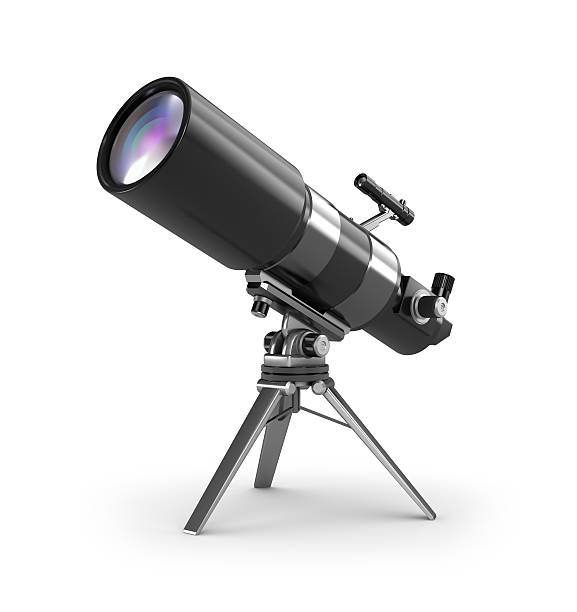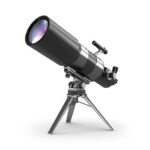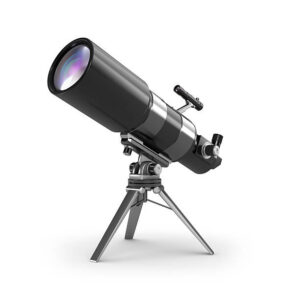Best telescope Seller in India

Telescope Seller in India
In India, Best Telescope Seller in India with its diverse landscapes and varied climates, offers excellent opportunities for stargazing and astronomical observation. Whether you’re an amateur astronomer, a curious student, or simply someone who appreciates the beauty of the night sky, a telescope can open up new horizons and reveal the wonders of the universe. In this comprehensive guide, we are the best telescope sellers in India, Sseaindia (Sandhu Scientific Educational Ads) providing you with valuable information to make an informed purchase decision. We will discuss the factors to consider when buying a telescope, highlight the top telescope brands, and present a reputable Telescope Sellers in India sellers across the country.
What is Telescope
A Best Telescope Seller in India is an optical instrument designed to magnify distant objects and capture more light for improved visibility. It consists of lenses or mirrors that gather and focus light, allowing distant celestial objects to appear closer and brighter. Telescope Sellers in India are used for astronomical observations, allowing us to study stars, planets, galaxies, and other celestial bodies. They come in various types, including refractor telescopes that use lenses, reflector telescopes that use mirrors, and compound telescopes that combine both. Telescopes are crucial tools for astronomers, researchers, and amateur stargazers, enabling them to explore the universe and make groundbreaking discoveries. They vary in size, from portable models for beginners to large observatory-grade instruments for professionals. Telescopes have revolutionised our understanding of the cosmos and continue to inspire curiosity about the night sky.
Types Of Telescope :
A. Types of Telescopes: When choosing a telescope, it’s important to understand the different types available:
- Refractor Telescopes: These use lenses to gather and focus light. Refractor telescopes, also known as dioptric or lens telescopes, use a lens to bend and focus light to produce images. They are renowned for their crisp and high-contrast images, making them ideal for lunar and planetary observation. While simpler in design, they tend to have longer tubes, making them less portable. Additionally, they can be more susceptible to chromatic aberration, which is corrected in some high-end models with additional lens elements.
- Compound Telescopes: Combining lenses and mirrors for improved performance. Compound telescopes, also known as catadioptric telescopes, combine lenses and mirrors to gather and focus light, offering a versatile and compact design. Their most common types include Schmidt-Cassegrain and Maksutov-Cassegrain telescopes. These telescopes provide excellent image quality, suitable for both celestial and terrestrial viewing. While typically more expensive than refractor or reflector telescopes, they offer a good balance of portability and performance for astronomers and observers.
- Catadioptric Telescopes: Also known as “compound telescopes,” they are a popular choice due to their versatility.Catadioptric telescopes, like Schmidt-Cassegrain and Maksutov-Cassegrain designs, utilize both lenses and mirrors to gather and focus light. They provide a compact and versatile option for astronomers, offering good image quality for both celestial and terrestrial observations. Their combination of optical elements allows for portability without compromising performance.
B. Aperture and Light Gathering Power: The aperture size determines a telescope’s ability to collect light. A larger aperture provides better image clarity and the ability to observe fainter objects. Aperture in a telescope refers to the diameter of its primary lens or mirror, determining its light-gathering power. A larger aperture collects more light, resulting in brighter and more detailed celestial observations. It plays a crucial role in a telescope’s ability to resolve fine details and observe faint objects in the night sky.
C. Mounts and Stands: The mount is crucial for stability and ease of tracking celestial objects. Common types include equatorial and altazimuth mounts. Mounts and stands are essential components for supporting and stabilizing various equipment, including telescopes and cameras. They come in various designs, such as equatorial mounts for precise celestial tracking and alt-azimuth mounts for simple up-and-down and side-to-side movements. The choice of mount can significantly impact the ease of use and the accuracy of tracking celestial objects. Sturdy and well-designed mounts and stands are crucial for achieving clear and steady observations or photographs.
D. Budget: Telescope Sellers in India vary greatly in price. Determine your budget beforehand to narrow down your options. Creating a budget for a telescope involves determining the allocated funds for the purchase, considering not only the telescope’s cost but also any associated accessories like eyepieces, mounts, and filters. A well-planned budget helps in balancing quality and features within the available resources, ensuring a satisfying and functional telescope purchase.
E. Accessories: Consider additional accessories like eyepieces, finderscopes, and filters to enhance your observing experience. Telescope accessories enhance the capabilities and usability of telescopes. These include eyepieces for magnification, filters for enhancing planetary and lunar views, and mounts for stability and tracking. Choosing the right accessories can greatly improve the overall observing experience with a telescope.
F. Portability and Size: Think about where you’ll be using the telescope. Smaller, portable models are ideal for travel, while larger ones may require a dedicated observatory. Portability and size are crucial factors when selecting a telescope. Smaller, more compact telescopes are easier to transport and store, making them ideal for on-the-go or urban observers with limited space. However, larger telescopes often provide better light-gathering capabilities and resolution, suited for deep-sky observations in darker locations. Balancing portability and size depends on individual preferences and intended use.
How Telescopes Work:
Telescopes function by utilizing the principles of optics to magnify distant objects, allowing astronomers and enthusiasts to observe celestial bodies in detail. They consist of a series of lenses and mirrors that gather and focus light, enhancing visibility and enabling the study of distant stars, galaxies, and other astronomical phenomena. Through the process of refracting or reflecting light, telescopes produce magnified images, enabling researchers to explore the depths of space and unravel the mysteries of the universe.
Optical Wizardry
At its core, a telescope operates on the principle of gathering and focusing light. It consists of several essential components, including lenses or mirrors, an eyepiece, and a tube or mount for stability. There are various types of telescopes, each employing different optical configurations to achieve specific objectives. Here are the primary types:
- Refractor Telescopes: Also known as dioptrics, refractor telescopes use lenses to bend and converge light rays. The primary lens, called the objective lens, collects and refracts light, focusing it to form an image at the eyepiece.
- Reflector Telescopes: Reflectors, on the other hand, use mirrors to capture and reflect light. The primary mirror, typically at the base of the Telescope Sellers in India provide you telescope, gathers light and directs it to an eyepiece or a secondary mirror. Reflectors come in various designs, such as Newtonian and Cassegrain.
- Compound Telescopes: These telescopes combine both lenses and mirrors to exploit their individual advantages. The most popular compound telescope is the Schmidt-Cassegrain, known for its portability and versatility.
- Catadioptric Telescopes: Catadioptric telescopes, also called compound telescopes, merge lenses and mirrors for enhanced optical performance. Common examples include the Schmidt-Cassegrain and Maksutov-Cassegrain designs.
The Power of Aperture: Size Matters
One crucial factor that defines a Telescope Seller in India provide you telescope’s capabilities is its aperture, often described as the diameter of its primary lens or mirror. The larger the aperture, the more light the telescope can gather, resulting in brighter and more detailed images. This characteristic is fundamental for observing faint objects in the night sky and resolving fine details on celestial bodies.
Mounts and Stands: The Art of Stabilization
A Telescope Seller in India provide telescope’s mount or stand is as vital as its optics. It ensures stability and facilitates tracking celestial objects as they move across the sky. The two primary mount types are:
- Equatorial Mount: Equatorial mounts align with the Earth’s axis, allowing telescopes to easily follow the apparent motion of stars and planets.
- Altazimuth Mount: Altazimuth mounts move the telescope in both horizontal (azimuth) and vertical (altitude) directions. While less complex, they require manual adjustments to track celestial objects accurately.
Budget and Beyond:
Considerations for Every Skywatcher
Choosing the right telescope by Telescope Seller in India involves evaluating your budget, which can range from modest to significant. Thankfully, there are quality Telescope Seller in India telescopes available in various price ranges, making astronomy accessible to enthusiasts with different financial constraints.
Moreover, consider the following factors when purchasing a telescope:
- Accessories: Accessories such as eyepieces, finderscopes, and filters enhance your observing experience. Ensure your chosen telescope supports a range of compatible accessories to expand your capabilities.
- Portability and Size: Think about where you’ll primarily use your telescope. Smaller, more portable models are ideal for travel, while larger, stationary telescopes may require a dedicated observatory space.
- Purpose: Define your purpose for astronomy. Are you interested in planetary observation, deep-sky imaging, or astrophotography? Telescope Seller in India provide you different telescopes excel in different areas, so align your choice with your objectives.
Customer Reviews and Recommendations:
Reading customer reviews and seeking recommendations from experienced astronomers can provide valuable insights into the performance and usability of specific telescope models. Websites like astronomy forums, social media groups, and dedicated astronomy websites are great places to gather information.
Become an expert skywatcher with our top-quality telescopes! Explore celestial wonders with ease and precision, perfect for both beginners and seasoned enthusiasts. Discover the universe’s mysteries today with our user-friendly equipment.
Conclusion:
Purchasing a telescope is a significant investment in your exploration of the cosmos. By considering factors like telescope type, aperture size, budget, and accessories, you can make an informed decision. The top telescope brands in India, Sseaindia (Sandhu Scientific Educational Ads) offer a wide range of options to cater to your specific needs. Additionally, reputable telescope sellers like Amazon India, Flipkart, Sseaindia (Sandhu Scientific Educational Ads)make it convenient to find the perfect telescope for your astronomical journey. Remember to consult customer reviews and recommendations to further refine your choice. With the right telescope, the universe is yours to explore and enjoy.








